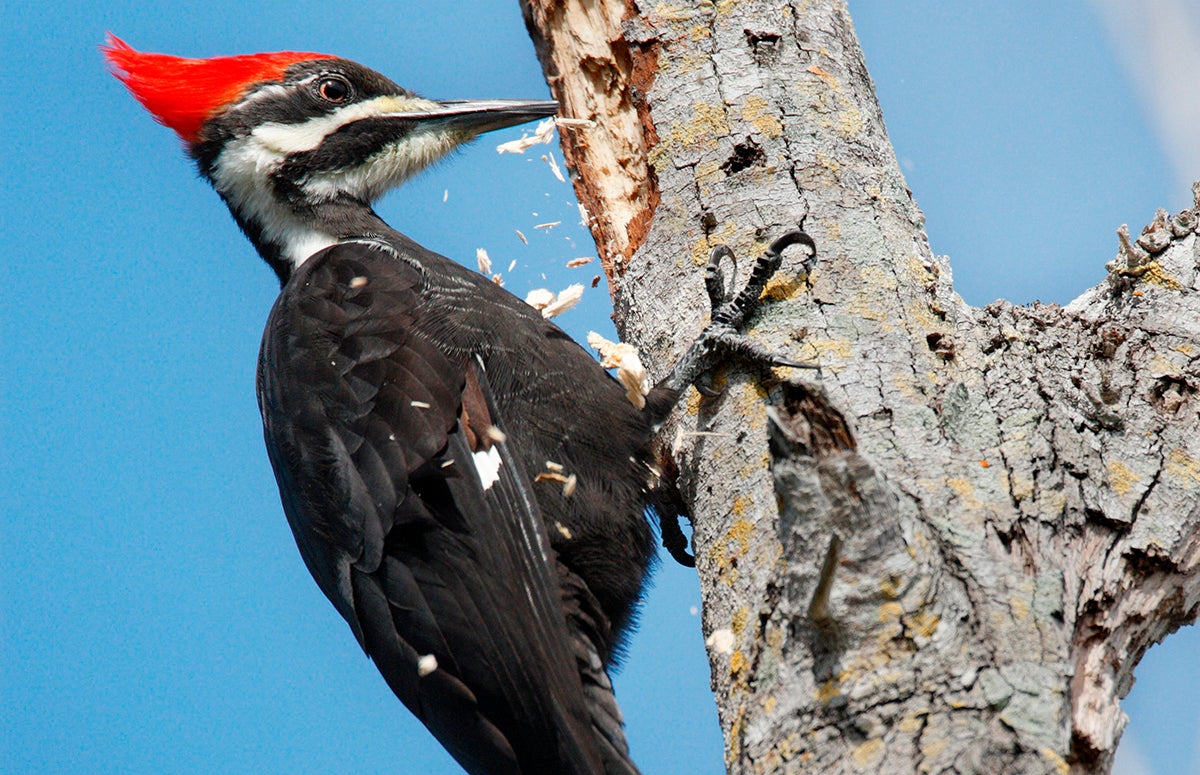Revealing the Secrets of Woodpeckers: Actions, Habitat, and A Lot More
Woodpeckers, with their unique behaviors and specialized adaptations, have long captivated researchers and nature fanatics alike. By revealing the mysteries bordering woodpeckers' behavior and habitat selections, a much deeper understanding of these avian marvels emerges, using a glimpse into their fascinating globe.
Woodpecker Habits Insights
In analyzing woodpecker behavior, an interesting display of specialized skills and adaptations arises, clarifying their impressive ecological niche - Woodpeckers in Florida. Woodpeckers, understood for their unique drumming on trees, possess a variety of behavior traits that add to their survival and success in their environment. One essential actions is their drumming, which serves several objectives such as interaction, developing area, drawing in companions, and situating food resources. This rhythmic pecking also showcases their amazing stamina and endurance, as they can hammer away continually at high rates without creating damage to themselves.
Additionally, woodpeckers show a special feeding behavior defined by their capability to essence insects from tree bark using their specialized beaks. Their lengthy, barbed tongues aid in capturing prey, while their strong neck muscles offer stability and accuracy during pecking activities. This feeding method permits woodpeckers to accessibility surprise insect larvae and remove them with impressive effectiveness.
Habitat Preferences and Selection
What aspects influence the habitat preferences and option of woodpeckers? Woodpeckers are extremely adaptable birds understood to live in numerous atmospheres worldwide. However, they do exhibit preferences for specific environment attributes. One essential variable affecting woodpecker environment option is the accessibility of appropriate nesting sites. Woodpeckers typically choose woodlands with a mix of fully grown trees that provide ample chances for dental caries excavation. These tooth cavities act as critical nesting and roosting sites for woodpeckers and are essential for their reproducing success.
In addition, woodpeckers reveal a choice for environments with an abundant supply of food sources. They are mostly insectivorous, preying on beetles, ants, larvae, and various other pests found in rotting wood or tree bark. Woodpeckers have a tendency to favor woody areas with a diverse insect populace to meet their nutritional requirements.
Moreover, the visibility of dead or decaying trees is one more key consider woodpecker habitat choice. These trees not only offer food resources however additionally provide ideal substratum for tooth cavity excavation. Dead trees are vital for the maintenance of healthy woodpecker populaces, as they play an essential function in the woodpeckers' life process and community characteristics.
Feeding Routines and Diet Composition
Woodpeckers show a specialized feeding habits focused on foraging for pests within various habitats. In enhancement to pests, woodpeckers also take in tree sap, fruits, nuts, and seeds, including range to their diet depending on the period and availability of food resources.
The foraging methods of woodpeckers are well-adapted to their arboreal way of living (Woodpeckers in Florida). Their capacity to dig deep into wood not only provides them with food yet additionally helps in creating nesting cavities and establishing territories. Woodpeckers play a crucial function in preserving the health of woodlands by managing insect populations and assisting in the decomposition of wood. Understanding their feeding practices and diet composition is vital for preservation initiatives intended at maintaining these special and useful birds.
Drumming Appears and Interaction
Making use of rapid drumming audios on different surface areas, woodpeckers employ a distinct type of communication to signal territory borders and bring in friends. This drumming behavior is not just a method of interaction but also acts as a way for woodpeckers to establish their presence within a particular area. The intensity, rate, and pattern of the drumming can communicate vital details to other my site woodpeckers around.
Woodpeckers utilize drumming audios to announce their visibility in an area and to warn off prospective trespassers. The loud and repetitive nature of the drumming serves as a clear signal to other woodpeckers that the area is already asserted. This helps in reducing conflicts and minimizing physical battles in between people.

Survival Adaptations and Specialized Makeup

Verdict
In final thought, woodpeckers exhibit one-of-a-kind actions, such as drumming noises for communication, and have right here specialized makeup for survival in their chosen environments. Their feeding practices and diet plan structure better show their adaptability to various atmospheres. By understanding these elements of woodpeckers, scientists and guardians can better protect and maintain these interesting birds and their ecological communities.